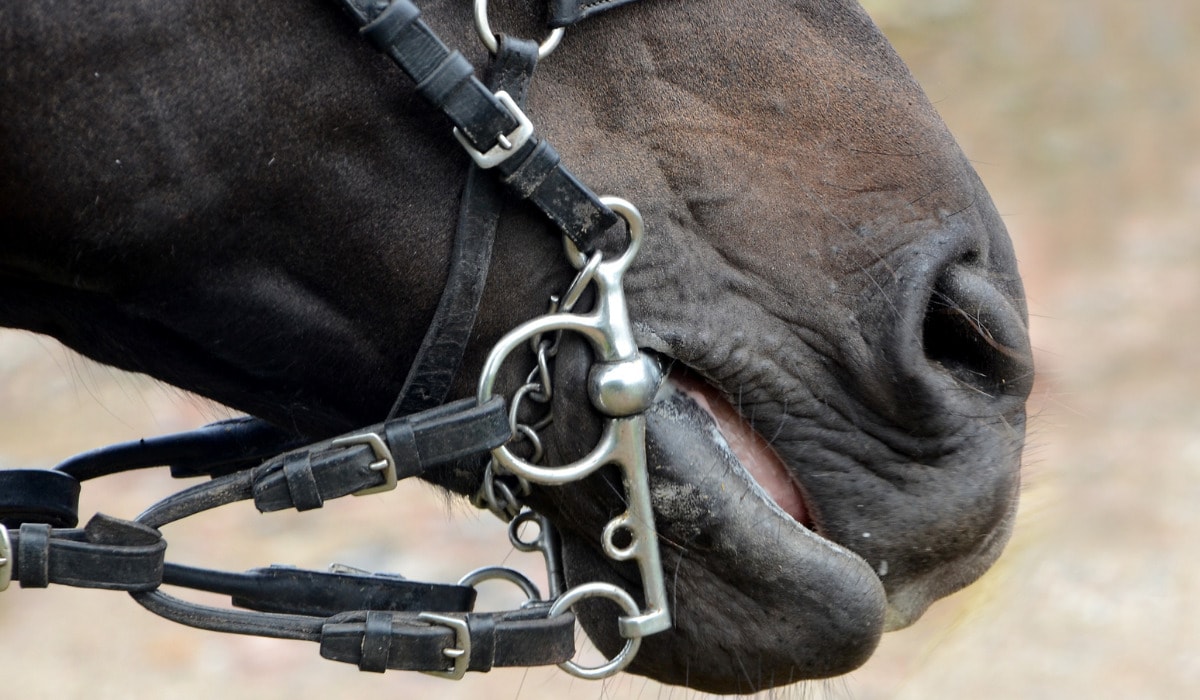
He runs faster and with increasing desperation. The escalating pain now causes your horse to panic. “You apply ‘the brakes’ with an increasingly frantic pull on the reins. This convinces him that the paper monster is dangerous and he takes off,” he says. Instinctively, you clutch at the reins and give your horse a painful bang in the mouth. The horse spooks and you lose your balance. “Imagine you’re riding in a bitted bridle and a piece of paper blows across your path. If they didn’t flee, they got eaten.”Ī bit puts their evolutionary flight response on high alert. Their survival as a species depended on their shyness.

If you hurt your horse, it speeds up,” he explains. On the contrary, it often acts like an accelerator. A bit doesn’t act like the brakes on a car. “One of the most deeply-rooted myths in horsemanship is that a bit controls the horse. Trigeminal neuralgia occurs most commonly in horses required to work with their heads in flexion.” Horses Run From Painīit-induced pain isn’t just uncomfortable for the horse, it creates dangerous situations for riders, says Dr. A head-tosser may also be difficult to bridle, apersistent head-rubber, unable to stand bright light, wind or rain, and impossible to handle around the ears. Horses experience pain in the mouth, but also in their face, eyes, and ears. This is the most common cause of head shaking (tossing). “The repeated pressure of bit on bone causes the sensory nerve to the face to become super-sensitive, i.e., to develop trigeminal neuralgia. It’s probable, he says, that horses today exhibit a similar frequency of damage. He found bone spurs on the bars of the mouth in 62% of the jawbones and evidence of either bone spurs or dental damage in 88%. Cook examined 66 jawbone specimens from domestic horses in three Natural History museums. In a study published in Equine Veterinary Education, Dr. Cook’s research suggests the damage may go even deeper - to the bone and beyond. A too-severe bit in the wrong hands, or even a soft one in rough or inexperienced hands, is a well-known cause of rubs, cuts and soreness in a horse’s mouth. Most riders agree that bits can cause pain to horses. Bronze age man made a mistake putting a piece of metal in a horse’s mouth.” Cook says, “I might have listed twelve problems as ‘aversions to the bit.’ From research completed since then, I now list over two hundred negative behaviours and forty diseases…I kick myself for not having recognized sooner that the bit causes so much mayhem.

Obstructed breathing, impaired gait and evasive behaviours are among his growing list of bit-induced conditions. And it’s not just physical damage to the mouth. Specifically, that information connects bits to a wide variety of diseases, health conditions and behavioural issues that until now were not associated with the hardware of a bridle. And it wasn’t until it was possible to communicate and control a horse without a bit and switch a horse overnight from bitted to bitless that all the information came tumbling in,” he says. I didn’t really consider seriously what the bit is doing to the horse. I accepted it, too, in spite of the fact that I supposedly had scientific training. “We’ve grown up with the presence of a bit in a horse’s mouth and accepted it without question, which is something in retrospect I can say quite vigorously was a big mistake. If it weren’t for his extensive academic background, his views might seem altogether unbelievable. Suffice it to say that he knows a fair bit more about the subject than most. That’s important, because what Dr. The Tufts University professor emeritus has devoted countless hours, two books - Specifications for Speed in the Racehorse: The Airflow Factors and Metal in the Mouth: The Abusive Effects of Bitted Bridles - and over a hundred research articles in scientific and horsemen’s journals to the horse’s head.


 0 kommentar(er)
0 kommentar(er)
